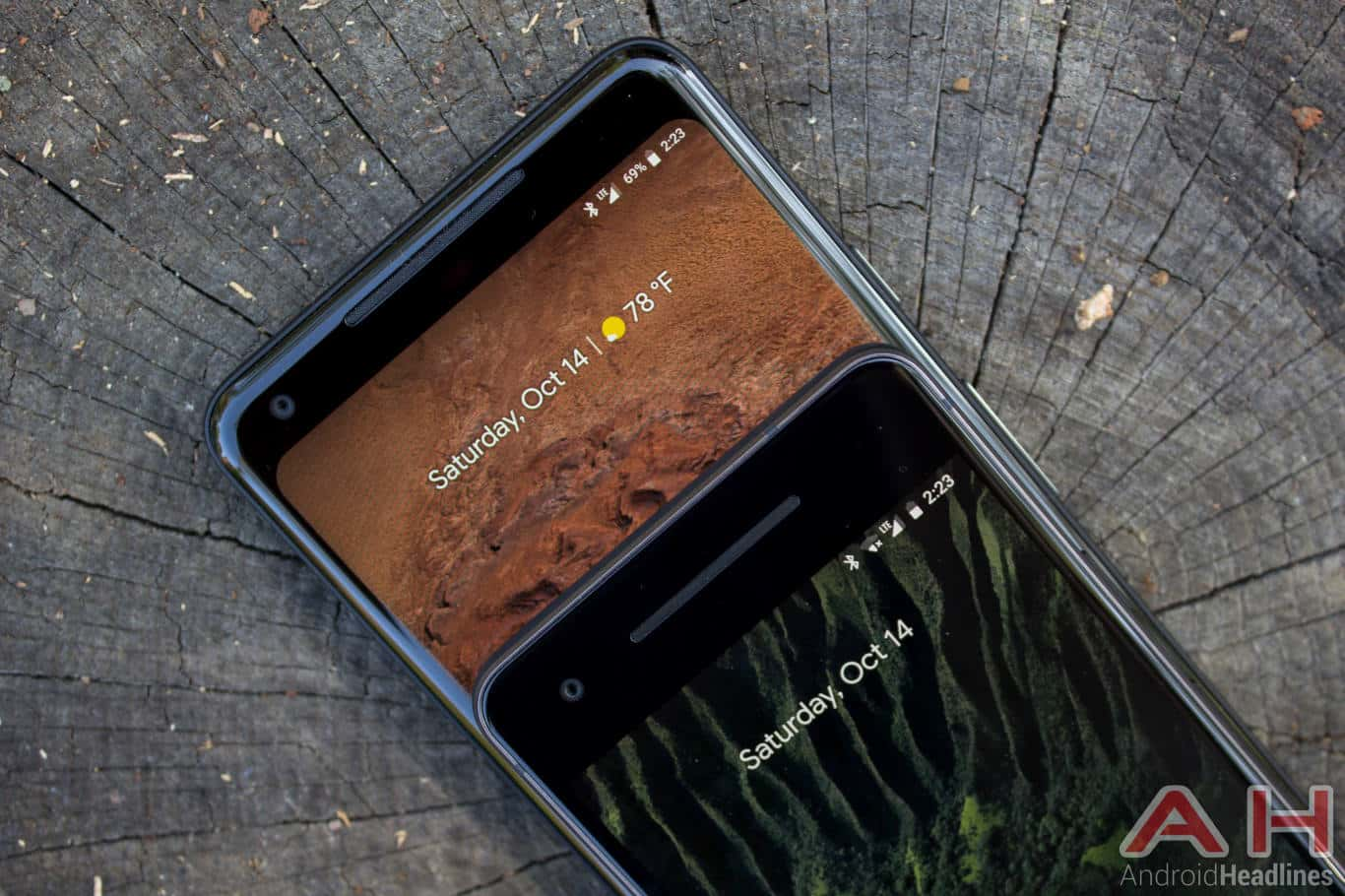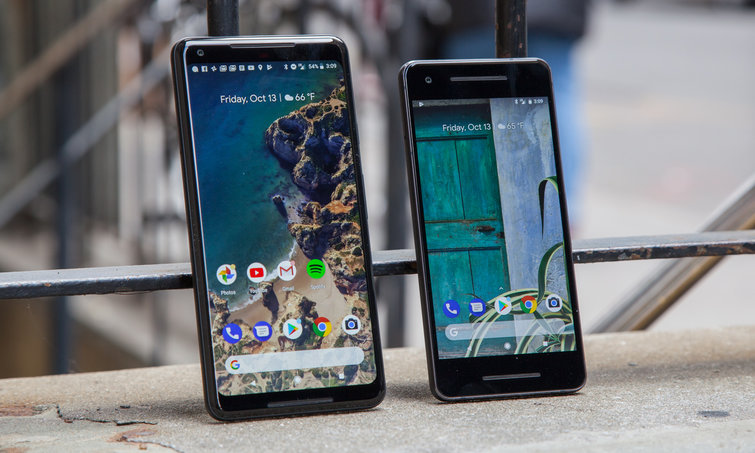Pixel 2 XL Screen Defective? Google Responds
Some reviewers have complained about the Pixel 2 XL's screen being pale, but Google says it's "more natural."

Google has come under fire after reviewers of the company's Pixel 2 XL have complained of a dull color problem with its screen. And now, Google has responded.

In a statement to The Verge, Google said that it's designed the Pixel 2 XL's display to be "more natural and accurate." That translates to a slightly duller picture that delivers a more accurate representation of color than vivid displays that wash out detail, the company has argued. Google also said that the Pixel 2 XL also comes with a vivid display mode, which will boost color saturation by as much as 10 percent.
Update 12:39 pm ET. We've performed our own testing and can confirm that the Pixel 2 XL exhibits the same issues others have complained about in regards to colors. Hues are more vibrant on the regular XL, and there's a blue tint to Pixel 2 XL when you shift the phone in your hand. We have updated our review accordingly.
Google's statement comes after several Pixel 2 XL reviewers have complained of a dull display that ultimately makes its screen far less appealing than those from LG, Samsung, and others. The Verge's Vlad Savov was one of the more outspoken critics, saying that the Pixel 2 XL's screen is "poor." He pointed to problems with resolution and color accuracy, and said that it's an "inexcusable disaster."
Android Central had other issues with the Pixel 2 XL's panel, which is made by LG. "The 2880x1440 resolution is plenty high, but the Pixel 2 XL exhibits the same sort of soft grain and grit as the V30 on white backgrounds when scrolling — one of those things you can't un-see once it's been pointed out."
In fact, Android Central preferred the colors and overall screen performance of the lower-resolution Pixel 2. However, not everyone believes that these issues are as bad as they seem.
MORE: 9 Reasons to Buy the Google Pixel 2 (and 4 Reasons to Skip)
Sign up to get the BEST of Tom's Guide direct to your inbox.
Get instant access to breaking news, the hottest reviews, great deals and helpful tips.
"I do notice a slight blue cast when I hold the Pixel 2 XL off-angle, but I don't see the graininess when scrolling on single-color backgrounds that other reviewers have pointed out," said Mark Spoonauer, editor in chief of Tom's Guide, who reviewed the Pixel 2 and Pixel 2 XL. "In general, the panel has delivered the richly saturated hues, perfect blacks and wide viewing angles we expect from an OLED screen, but we'll be doing more in-depth testing versus the regular Pixel 2 and the Galaxy S8, and will update our full review with our findings."
Adam Ismail, a staff writer for Tom's Guide, however, noted that the Pixel 2's screen had a sepia tone to it, and that the whites aren't pure white. He noted that it looks like a "vintage Instagram filter."
So, what's really going on? The problem might have something to do with screen calibration.
When a screen is effectively calibrated in the television world, for instance, it might look rather dull and lack color. However, the result is more color accuracy and a more accurate depiction of the image. Some people prefer brighter, more vivid color representation, which ultimately lends itself to reduced accuracy.
For its part, Google said that it will analyze how users react to the Pixel 2 XL's display and consider "adding more color options through a software update." It will do that if it gets enough complaints.
Don Reisinger is CEO and founder of D2 Tech Agency. A communications strategist, consultant, and copywriter, Don has also written for many leading technology and business publications including CNET, Fortune Magazine, The New York Times, Forbes, Computerworld, Digital Trends, TechCrunch and Slashgear. He has also written for Tom's Guide for many years, contributing hundreds of articles on everything from phones to games to streaming and smart home.
-
neverforgetjohn As an owner of a Mit's X7 (best tube set ever made), a Mit's Daimond 40in (second best tube set every made) and now an "old" Panasonic VT65 with some Samsung LCDs in between I ditched due to the poor viewing angle of LCD technology to await OLED maturing.... the first thing I noticed on phones with OLED screens was a "cartoon" like problem Google has corrected it sounds like. Sad we have to be controlled by the "average" opinion that is easy to fool with flashy "things". Jezzz people still by DVDs that was for standard NON-HD TVs like my OLD tube sets. Glad Google made a great phone that doesn't look like a cartoon based on the reports coming in. Don't do it Google... just make them the way they should be: properly calibrated!Reply -
2.m3n.eq Never - I like your take away from the article. I prefer accurate calibration of vivid saturation. My natural eye does not view everything in a vivid vibrant manner, so I need not my phone, or it's screen, to "skew" such a view I possess.Reply -
NavySubmariner I don't mind the "dull" colors so it can look natural. What I do mind is taking a picture or video and having it look dull on my phone when in fact the object I'm taking a picture of is bright. Does anyone know taking a picture or video on your Pixel 2 shows the actual colors, or does Google dumb "dull" it down for viewing on the display? It looks to me from various reviews that this "dull" issue only affects the home screen and app icons, but when you go into the app (youtube, google photos, etc), the pictures and videos are stunningly bright as the original subject.Reply -
jonathong1980 "Look at the bezels on this thing, it doesn't seem like a phone from 2017..."Reply
Look at the resolution on your videos, they don't seem like videos from 2017. -
draw8962 Un-see the No see-ums on your handsets screen LG a BootLoop Lawsuit wasn’t enough now you want to infect all other manufactured phones with piss poor components and call it rain or in this case LG aficionados call a golden shower.Reply
